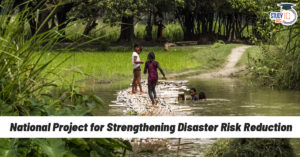Table of Contents
Windfall Tax
Context: Recently the Union government has slashed windfall tax on domestically produced crude oil to ‘Zerol’ per tonne with effect from September 18.
About Windfall Tax
- It refers to higher tax levied by the government on specific industries when the industry experiences unexpected and above-average profits.
- These could be due to various global and geopolitical events which are outside the control of the industry.
- Windfall refers to a dramatic and unanticipated increase in profits. On the other hand, Tax implies an imposition levied on this dramatic income growth.
- In India it is Imposed as a Special Additional Excise Duty (SAED) on crude oil production and exports of diesel, petrol and aviation turbine fuel (ATF).
| Facts |
|
| UPSC PYQ |
| Q. The term ‘West Texas Intermediate’, sometimes found in news, refers to a grade of: (2020)
(a) Crude oil (b) Bullion (c) Rare earth elements (d) Uranium Answer: A |
Green Climate Fund
Context: Recently the Green Climate Fund (GCF) chief started a mission to help vulnerable nations that have not received a penny from the world’s largest dedicated source of climate finance. It has identified 19 such climate-vulnerable nations.
About Green Climate Fund (GCF)
- It is the world’s largest fund dedicated to helping developing countries fight climate change.
- Established: In 2010 by the United Nations Framework Convention on Climate Change (UNFCCC).
- Secretariat: Songdo, South Korea.
- Goals of GCF:
- It helps developing countries to limit/reduce their greenhouse gas emissions.
- It helps vulnerable societies adapt to the impacts of climate change.
- To support a paradigm shift in the global response to climate change.
| UPSC PYQ |
Q. Which of the following statements regarding ‘Green Climate Fund’ is/are correct? (2015)
Select the correct answer using the code given below. (a) 1 only (b) 2 only (c) Both 1 and 2 (d) Neither 1 nor 2 Answer: A |
Climate Finance Action Fund (CFAF)
Context: Azerbaijan, which is going to host the 29th Conference of Parties (COP) of the United Nations Framework Convention on Climate Change has announced a new fund called the ‘Climate Finance Action Fund’.
About Climate Finance Action Fund (CFAF)
- Secretariat: Baku, Azerbaijan.
- Funding:
- Voluntary contributions from fossil-fuel-producing countries and companies.
- Fossil-fuel producing countries and companies will have the option to make annual contributions, either as a fixed sum or based on production volumes.
- Usage of Funds:The funds will be divided equally:
- 50% – climate projects in developing countries.
- 50% – To support developing nations in implementing national climate action plans.
- Conditions for becoming Operational:
- When it reaches a minimum corpus of $1 billion.
- At least 10 countries must commit to being shareholders for the fund to start.
- Rapid Response Funding Facility (2R2F): 20% of the revenues generated from investments will be deposited in 2R2F to provide highly concessional and grant-based support.
Impact of Fed Rate Cut
Context: The much-anticipated two-day meeting of the Federal Open Market Committee (FOMC) of the U.S. Federal Reserve, started on September 17. It is expected to conclude with an announcement of a rate cut—the first by the central bank since March 2020.
Impacts of U.S. Federal Reserve’s Interest Rate Cuts on Global Markets
- Global Growth Prospects: A rate cut could indicate a commitment to supporting growth in the U.S. economy, potentially offering a positive outlook for global markets amidst concerns like China’s slowdown.
- Strengthens Global Investment: Lower U.S. interest rates make U.S. assets less attractive, leading to increased investment in emerging markets.
- Bond Markets: The anticipated Fed rate cut is expected to benefit the global bond market. Bond Yields will fall in the USA due to increased interest rates.
- Weakens U.S. Dollar: Rate cuts often lead to a depreciation of the U.S. dollar, impacting global trade balances and exchange rates.
- Impacts Commodity Prices: A weaker U.S. dollar can lead to higher prices for commodities like oil and gold, as they are generally priced in dollars.
Impact on India
- Positive Carry Trade:
- When the Fed cuts its policy rates, the difference between the interest rates of the US and the other country could widen.
- This makes countries such as India more attractive for the currency carry trade. The lower the rate in the US, the higher the arbitrage opportunity.
- Capital Inflows: A lower US rate could boost foreign investment into India, strengthening the currency and equity markets.
- Trade and Growth: Enhanced US economic growth could improve demand for Indian exports, supporting the country’s growth trajectory.


 National Project for Strengthening Disas...
National Project for Strengthening Disas...
 CAG Report on Pradhan Mantri Kaushal Vik...
CAG Report on Pradhan Mantri Kaushal Vik...
 NITI Aayog Report on Public R&D Inst...
NITI Aayog Report on Public R&D Inst...

























